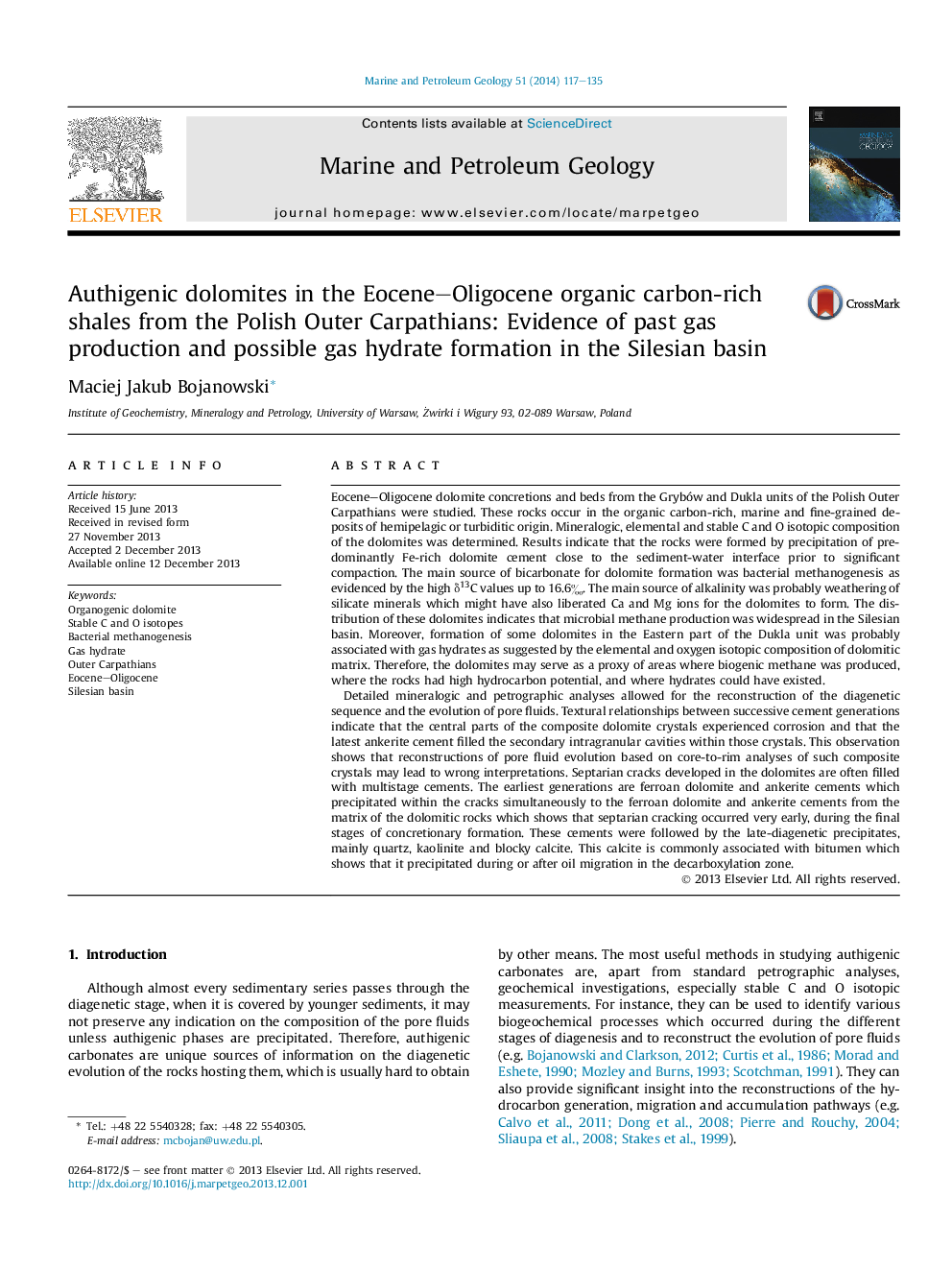| کد مقاله | کد نشریه | سال انتشار | مقاله انگلیسی | نسخه تمام متن |
|---|---|---|---|---|
| 6435303 | 1637173 | 2014 | 19 صفحه PDF | دانلود رایگان |

- Mineralogic, elemental and stable C and O isotopic composition of authigenic dolomites is shown.
- The dolomites precipitated during early diagenesis mainly due to bacterial methanogenesis.
- Microbial gas production was widespread in the Silesian basin during Late Eocene and Oligocene.
- Dolomites from the Eastern part of the basin were probably associated with gas hydrates.
- Diagenetic sequence is proposed and the evolution of pore fluids is reconstructed.
Eocene-Oligocene dolomite concretions and beds from the Grybów and Dukla units of the Polish Outer Carpathians were studied. These rocks occur in the organic carbon-rich, marine and fine-grained deposits of hemipelagic or turbiditic origin. Mineralogic, elemental and stable C and O isotopic composition of the dolomites was determined. Results indicate that the rocks were formed by precipitation of predominantly Fe-rich dolomite cement close to the sediment-water interface prior to significant compaction. The main source of bicarbonate for dolomite formation was bacterial methanogenesis as evidenced by the high δ13C values up to 16.6â°. The main source of alkalinity was probably weathering of silicate minerals which might have also liberated Ca and Mg ions for the dolomites to form. The distribution of these dolomites indicates that microbial methane production was widespread in the Silesian basin. Moreover, formation of some dolomites in the Eastern part of the Dukla unit was probably associated with gas hydrates as suggested by the elemental and oxygen isotopic composition of dolomitic matrix. Therefore, the dolomites may serve as a proxy of areas where biogenic methane was produced, where the rocks had high hydrocarbon potential, and where hydrates could have existed.Detailed mineralogic and petrographic analyses allowed for the reconstruction of the diagenetic sequence and the evolution of pore fluids. Textural relationships between successive cement generations indicate that the central parts of the composite dolomite crystals experienced corrosion and that the latest ankerite cement filled the secondary intragranular cavities within those crystals. This observation shows that reconstructions of pore fluid evolution based on core-to-rim analyses of such composite crystals may lead to wrong interpretations. Septarian cracks developed in the dolomites are often filled with multistage cements. The earliest generations are ferroan dolomite and ankerite cements which precipitated within the cracks simultaneously to the ferroan dolomite and ankerite cements from the matrix of the dolomitic rocks which shows that septarian cracking occurred very early, during the final stages of concretionary formation. These cements were followed by the late-diagenetic precipitates, mainly quartz, kaolinite and blocky calcite. This calcite is commonly associated with bitumen which shows that it precipitated during or after oil migration in the decarboxylation zone.
Journal: Marine and Petroleum Geology - Volume 51, March 2014, Pages 117-135